
Today there are over 15 million restaurants and bars in the world. Add in the booming winery and brewery industries, and the average consumer is over-saturated with choices when looking to grab a drink.
With so many options available, hospitality businesses are hard-pressed to elevate the experience they are providing guests. What’s the solution? Doug Miller, a lecturer at Cornell University’s Hotel School with over thirty years of experience in the industry, offers his best-practice tips for running a successful beverage program and enhancing the overall customer experience.
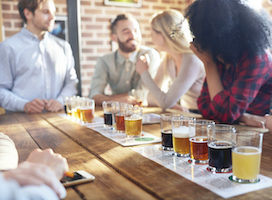
Consider your audience. Different people have different expectations. It’s important to understand who your customer base is, and where their interests lie. If you’re opening a new business, do some research. Visit successful businesses nearby, sit at the bar, and observe. Ask yourself, “What is the atmosphere? How are the customers responding to it? What’s on the food and beverage menus? What’s on tap? What are people ordering? What size pour is preferred?” If you’re an existing business looking to take it to the next level, do the research again. Study the differences between how your business operates versus the successful ones around you. Compare those to your ideal, and determine ways to bridge the gap.
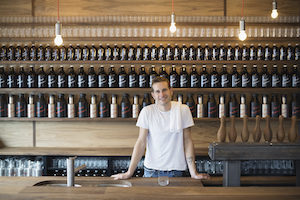
Be strategic. Armed with information about your target customers, choices must be made. If you have a tap beer program, will you offer beer tastings? If you do offer tastings, you can work the cost of the tastings into your pricing model. Is your audience beer-centric? If so, maybe you don’t need to offer as many options for the wine lover. If not, you may need to consider alternative beverage offerings. Does your target audience enjoy craft, imported or domestic beer? Is there a popular beer being produced locally? A common mistake businesses make is putting thought into creating a local food menu, but then offering no locally sourced beer or other beverages to accompany it. If the local element is important, then it should be represented in all aspects of the menu and business.
Also consider how your beverage program complements your food offering (if you have one). If you’re serving seafood, are you offering a wheat beer or white wine to accompany it? If you’re serving red meat, do you have an ale or Cabernet Sauvignon on the menu? Some businesses may choose to forgo a food offering altogether. If you’re choosing to not serve food, consider your business hours and location. Do your hours of operation cater to an after-dinner crowd? Is the location near popular restaurants?
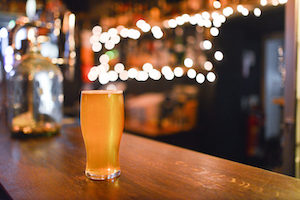
Cultivate an atmosphere. Atmosphere is one of the most essential components of any business. A beer program can be wildly impressive, but if the atmosphere doesn’t appeal to the clientele, the business will struggle.
Sit down at the bar and imagine the ideal experience of your clientele. Ask yourself questions. Is the bar and glassware clean? Is the lighting soft and inviting? Does the decor fit the vibe? What music is playing, and at what volume? Is it easy to carry on conversation? Should there be a television, and how often should it be on? If it’s not on, can it be covered or moved out of sight? Is there adequate seating for singles, couples and groups? Are there smells coming from the kitchen? Is there a draft from the front door? Is there space for bartenders to move behind the bar, and servers to move around the tables? Are the seats comfortable? Is there a place to hang a jacket or purse? Is a server readily available? Considering the customer experience from start to finish is an opportunity to spot aspects that may not be up to par.
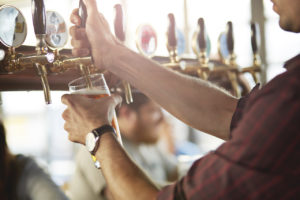
Be efficient. Establish a strategy for success. Perhaps most vital to this is equipping your service team with the knowledge they need to serve any customer. Take time to ensure they understand the customer experience they should cultivate. Consider creating cards on each beverage so that your servers can access detailed information on the history of a specific beer, including alcohol content, IBUs, OGs or FGs as needed. Encourage them to be proactive in offering a second drink to guests — a best practice is to ask “What would you like to select next?”, not “Do you want another?”
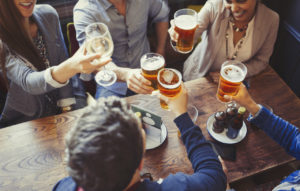
Engage your audience. The most critical element of a successful business is the customer experience. And while menu options and atmosphere can be major players in creating a good experience, the make-it-or-break-it factor is service.
The service industry can be challenging; you are serving a diverse clientele, with different needs and differing expectations. Some beer enthusiasts may expect a comprehensive history of their beverage from their server, while others may want no engagement while they enjoy a drink. Some guests may lack enthusiasm or interest in beer altogether, and be present out of necessity for a friend or group. Regardless, it is important to create an exceptional experience for each customer, and recognize their individual needs. Service is a delicate balance of managing expectations and trying to meet the needs of the guest. An establishment should consider how they can improve the experience for their clientele and make their visit memorable.
The best possible experience can make many forms; for some, it will be engaging with the server over the intricacies of their beverage, while for others, it may be minimal yet efficient communication. Asking simple questions such as “Why did you choose this beer?” or “What brings you out today?” can offer insight into the guest’s beer knowledge and expectations. The answer may have to do with the brand, hops, alcohol content or simply the name sounding good. Any information can help servers to determine the level at which to engage the customer.
Pro tip — don’t leave the engagement to just the bartenders and servers! A manager’s place is also engaging with guests. Don’t waste time retroactively trying to handle online perception in an office during open hours. The best time to manage perception is on the floor as it’s developing.
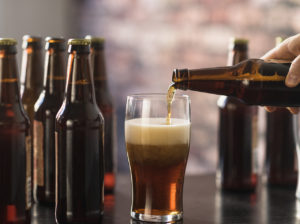
Don’t make assumptions. The biggest mistake a service team can make is to assume anything about a customer. A guest may not be there for beer or wine. Men don’t always prefer beer, and women aren’t always wine. Neither beverage should be considered classier than the other; the same descriptors are used for both pallets, and the tongue has a similar experience – bitter, sweet, salty, sour or umami. A glass should be provided for either beverage; similar to wine, the full experience of beer comes from pouring it into a glass (not frozen; even chilled is not usually worth the fridge space) and allowing the guest to enjoy the aroma of the beer. Don’t expect every guest to be familiar with beer or wine, and don’t insult their understanding, either. Make every attempt to engage the customer on their preferred level, and avoid creating any sense of chagrin or discomfort.
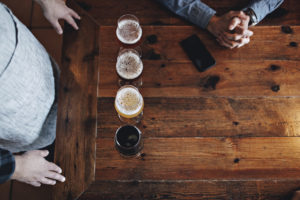
Be decisive. With so many considerations available, it’s easy to become overwhelmed and struggle with decision-making. The same atmosphere doesn’t appeal to everyone. You can only have so many items on a menu to appeal to your clientele, and an over-saturated beer selection will not accomplish any goals. To be successful, you must determine your business strategy, research your target audience, and then make decisions that align accordingly. A beer menu doesn’t need to be huge; it can offer only 6-7 beers, given they are chosen with the clientele in mind. Purchasing too much beer runs the risk of it going out of date in the storeroom — the average shelf life of an IPA is around 60-90 days. Some beer styles can have a longer shelf life, but for most beers styles, fresher is better. Tap lines should be cleaned every other week, and no business wants to waste money on a keg that won’t sell. It’s impossible to carry every type of beer, so don’t complicate your business by trying to establish a menu for all (but do offer that level of service).
At the end of the day, an enjoyable customer experience comes down to three themes: the environment, the service, and the engagement. Devoting time to regularly developing and re-evaluating your business plan, menu, atmosphere and service team is essential to creating the optimal experience that will bring your customers back over and over again.
To learn more about creating the optimal beer program, check out the Beer Essentials certificate program authored by Doug Miller.

Latest posts by Bailey Karfelt (see all)
- Why Python is the programming language to learn - February 13, 2020
- Master data science programming in R with new certificate program - February 3, 2020
- This holiday season, give the gift that keeps on giving - December 4, 2019